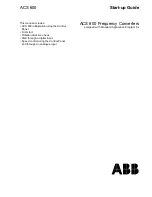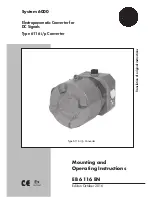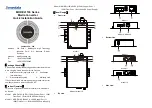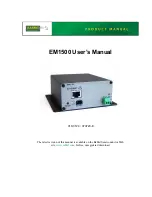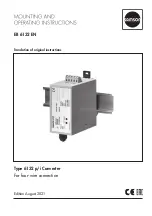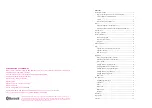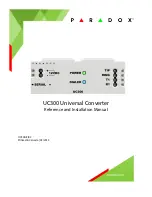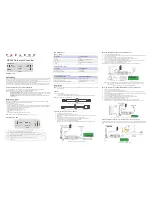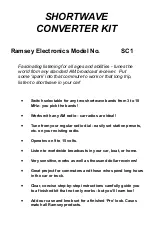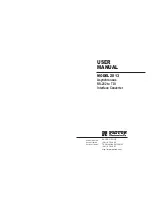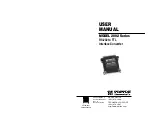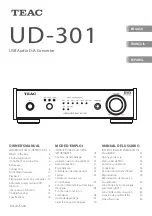
R2XL1
•
6
determine that the total gain of the circuit is 20.2 by multiplying the series gain
values together (10.1 x 2). This gives us plenty of control to get our low level
RCA signals up to the higher XLR requirements.
This may be more than you ever wanted to know about a preamplifier de-
sign, but we aren’t done yet! The output of the two opamps in the last stage
are sent through another set of coupling capacitors that removes any DC com-
ponent we may have accidentally added when we amplified the audio. It also
helps us to isolate our preamplifier from any DC present from a poorly de-
signed audio component that you may plug this into. We use larger 100 uF
capacitors here because XLR specifications say we need to drive down to 560
ohm impedances. The larger capacitors help us to preserve our low frequency
information. (The left channel works exactly the same as the right so take a
look at the schematic and apply your new found knowledge.)
All that seems fine with a stereo audio source, but how do you handle one
that is Mono? The mode selection switch (S1) allows you to take the right
channel audio input and send it simultaneously through both the left and right
amplifier stages for dual outputs are the right levels!
Now on to the power supply! Since we are going to run this product from a
12VAC power transformer we will need to convert the AC supply to a DC volt-
age in order for our opamps to work properly. To accomplish this, we use a
bridge rectifier consisting of D1-4 to take the AC input voltage and convert it to
positive DC pulses. This directly is too noisy for our application so C12 was
added to smooth things out. C12 acts like a battery and holds the voltage at a
more consistent level to get rid of the pulses (also called ripple). Since C12 is
a very small “battery” (it discharges almost as quickly as it charges) so some
of the pulses are still present. To eliminate these we use a voltage regulator to
completely smooth out the remaining pulses. The output of VR1 is our positive
supply and is completely smooth and ready to use.
So where do we get the negative supply from? Simple, we use a voltage
doubler scheme. This works by using a coupling capacitor C11 in a bit differ-
ent fashion. Here we are isolating the DC component of the positive half of the
supply and leaving only the AC component. This AC component is then recti-
fied by D5 and D6 into negative pulses. The negative pulses are then
smoothed by C13 into a negative supply source with a bit of ripple. To remove
the remaining pulses we use a negative voltage regulator (VR2) to completely
smooth it out. There you go, our negative supply!
At this point we have two regulators VR1 and VR2 with outputs of +12V
and –12V respectively. This means we have plenty of supply voltage for our
opamps to work with. Usually opamps can have maximum output of 1.4 volts
within their supply voltage so our opamps will go from +10.6V to –10.6V giving
you a 21.2 Volt total swing! More than enough to drive XLR inputs with plenty
of dynamic range. Ok, I think it is time to start building our kit!
Summary of Contents for RCA to XLR Converter R2XL1
Page 8: ...R2XL1 8...





















